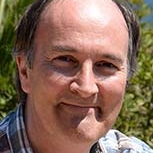Sensors for Imaging Cultural Heritage: Technologies, Methods and Data Processing
A special issue of Sensors (ISSN 1424-8220). This special issue belongs to the section "Sensing and Imaging".
Deadline for manuscript submissions: closed (25 March 2023) | Viewed by 48303
Special Issue Editors
Interests: materials art; materials science; spectroscopy; infrared spectroscopy; heritage; sensors
Special Issues, Collections and Topics in MDPI journals
Interests: multispectral and hyperspectral imaging; color image processing; saliency prediction; spectral imaging of artwork
Special Issues, Collections and Topics in MDPI journals
Interests: Internet of Things; environmental sensor networks; imaging
Special Issues, Collections and Topics in MDPI journals
Special Issue Information
Dear Colleagues,
Imaging continues to bring new ways to investigate our cultural heritage (CH). Innovations in various types of imaging sensors, optics, acquisition methods, and data processing allow clearer, deeper, and consequently new views of objects that can be obtained faster than previously. This special issue will focus on the techniques that go beyond a single digital camera image and aim to support documentation and conservation of CH objects. This Special Issue discusses imaging spectroscopy, multimodal imaging, and computational imaging, as well as includes descriptions of the best methodologies and acquisition parameters of workflows for operating imaging devices under indoor and outdoor environments. Topics dealing with contribution defining, testing, implementing, and developing specific criteria for optimizing the imaging systems, the methodologies, and the format of acquired data as well as the processing procedures for analysis, storage, usage, and dissemination of imaging data and results on 2D and 3D CH objects are also welcome.
Topics
- Raman Imaging spectroscopy
- Hyperspectral imaging
- Reflectance Transformation Imaging
- 2D and 3D image processing pipelines for data extraction
- Image registration for cultural heritage applications
- Pigment identification
- Imaging acquisition technical setup
- Endmember extraction and unmixing algorithms
- Deep learning applied to cultural heritage
Dr. Marcello Picollo
Prof. Dr. Eva M. Valero Benito
Prof. Dr. Kirk Martinez
Guest Editor
Manuscript Submission Information
Manuscripts should be submitted online at www.mdpi.com by registering and logging in to this website. Once you are registered, click here to go to the submission form. Manuscripts can be submitted until the deadline. All submissions that pass pre-check are peer-reviewed. Accepted papers will be published continuously in the journal (as soon as accepted) and will be listed together on the special issue website. Research articles, review articles as well as short communications are invited. For planned papers, a title and short abstract (about 100 words) can be sent to the Editorial Office for announcement on this website.
Submitted manuscripts should not have been published previously, nor be under consideration for publication elsewhere (except conference proceedings papers). All manuscripts are thoroughly refereed through a single-blind peer-review process. A guide for authors and other relevant information for submission of manuscripts is available on the Instructions for Authors page. Sensors is an international peer-reviewed open access semimonthly journal published by MDPI.
Please visit the Instructions for Authors page before submitting a manuscript. The Article Processing Charge (APC) for publication in this open access journal is 2600 CHF (Swiss Francs). Submitted papers should be well formatted and use good English. Authors may use MDPI's English editing service prior to publication or during author revisions.
Keywords
- imaging spectroscopy
- image processing
- state-of-the-art capture devices
- challenges in experimental design and methodology
- multimodal imaging
- image standardization
Benefits of Publishing in a Special Issue
- Ease of navigation: Grouping papers by topic helps scholars navigate broad scope journals more efficiently.
- Greater discoverability: Special Issues support the reach and impact of scientific research. Articles in Special Issues are more discoverable and cited more frequently.
- Expansion of research network: Special Issues facilitate connections among authors, fostering scientific collaborations.
- External promotion: Articles in Special Issues are often promoted through the journal's social media, increasing their visibility.
- Reprint: MDPI Books provides the opportunity to republish successful Special Issues in book format, both online and in print.
Further information on MDPI's Special Issue policies can be found here.








